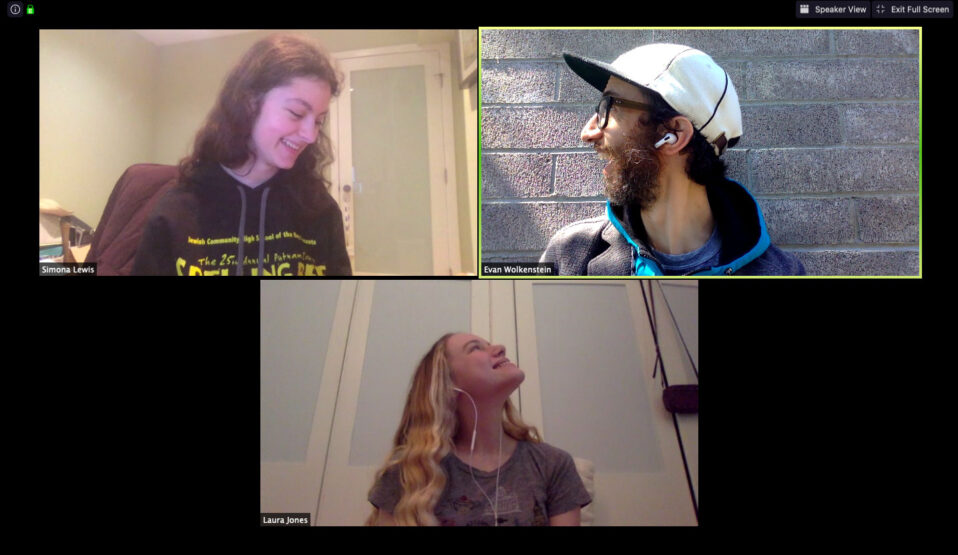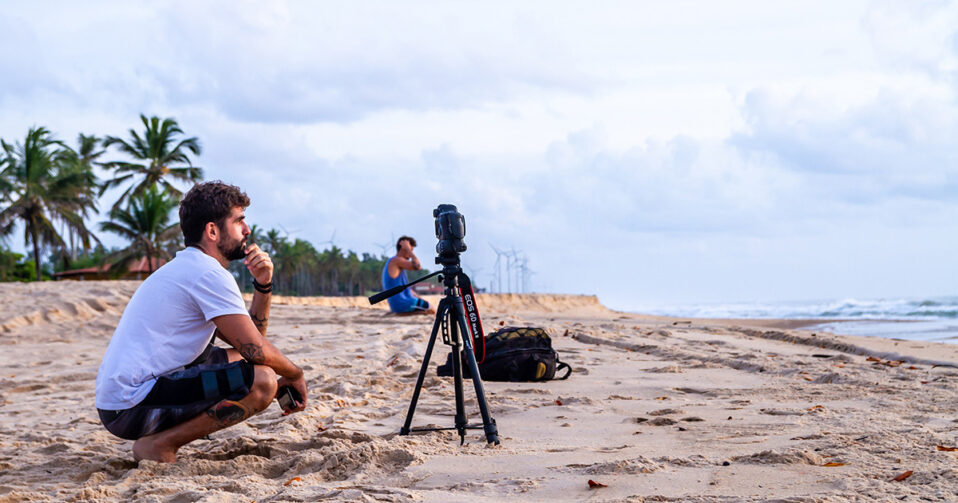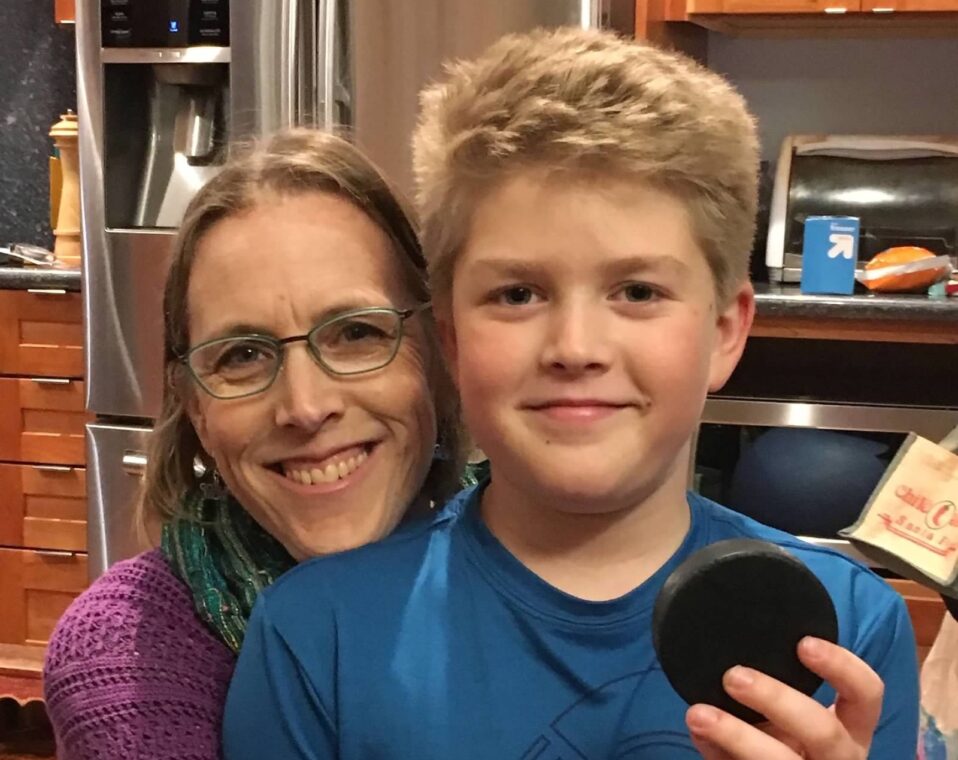Debra Sagan Massey, Senior Educator at Jewish LearningWorks in San Francisco, has for the last year been holding regular pop-up meetings for Jewish educators working with teens. As a result of the pandemic crisis, these meetings have recently gone virtual, but have, as a result, become fertile ground for sharing best practices – or in some cases, new practices – with colleagues.
While there is clearly no pedagogical silver bullet for this sudden and extraordinary educational disruption, Massey has been impressed with both the number and quality of innovations spurred by Covid-19.
“Some of my colleagues are pivoting to focus on strengthening the core of their teen populations,” explained Massey, who helps runs the Bay Area programming for the nation-wide Jewish Teen Education and Engagement Funder Collaborative. “Others are looking to work individually on mindfulness and wellness. In all of this, we are looking down the road to the mental health issues we will increasingly need to address in order to support teens to thrive.” This summer, Jewish LearningWorks will be providing virtual Youth Mental Health First Aid training for anyone who works with, or supports teens.
At a moment when our ritual calendar – following the Israelites as they wander in the desert – eerily parallels our current directionless moment, educators are acutely aware of the pedagogical opportunities, as well as the risks, to the entire structure of organized Jewish education. At the same time, beneath all this confusion flows a strong undercurrent of hope. A sense that Jewish culture is made for disruption, and has the capacity to survive and thrive. Among the teens themselves,
there appears to be a palpable sense of loss, but also an appreciation for how the community is pivoting to provide for them.
Mozi Turbow, a 14-year-old in Berkeley, recently heard that Camp Tawonga in the Sierra mountains will cancel its flagship summer program. “We’re all really sad about it, as this is supposed to be our last year as campers,” she explained about the Jewish overnight program, which has been operating since 1925. But after watching a Facetime Live town hall, during which the camp leadership explained their Plan B (and C), she felt some hope that some essential part of the camp experience will continue this year, one way or the other.
Max Bamberger, a 17-year-old at San Francisco’s Jewish Community High School of the Bay, was similarly grateful for his school’s creativity and commitment to student learning. Bamberger is also a 2019-2020 Bronfman Fellow, and had expected to study in Israel this summer with his cohort from around the country, a centerpiece of the program. The Bronfman program will hopefully bring those students to Israel next summer. For now, Bamberger and his friends are talking regularly on a Bronfman WhatsApp group, which has given him “further clarity” about the values of community and conversation that are central to the experience.
Like many Jewish teens, Bamberger said he was experiencing a deeper appreciation for the simple yet profound rituals of Jewish communal life.
“The other night I went for a walk to my shul [Congregation Beth Israel in Berkeley]. It’s freaky that services have been cancelled for the first time in decades, or maybe longer. But I saw from outside that the Ner Tamid was glowing above the Aron Kodesh. This gave me some hope. This too shall pass.”
The following are highlights of Bay Area teen programs, a sampling of programs and approaches for an unprecedented season that already feels like 40 years.
God was in this place…
Place-based Jewish institutions like camps and nature programs have had to shift radically this year. While most summer camps are cancelled, and just beginning to figure out how to salvage something from the season, many programs are finding a way to access their core competencies in unexpected ways. Wilderness Torah, which connects Jewish rituals with earth-based experiential learning, has leaned into two aspects of its pedagogy for teens – meditation and self-reliance. For its B’naiture program (focusing on nature-based Bnai Mitzvah ceremonies), staff have found ways to support an awareness of both self and nature at home.
“In some ways, the condition of pandemic revealed what is most helpful and valuable about our program, which is expanding awareness and tuning in to the mystery and beauty of earth under your feet,” explained Youth Programs Director Daniel Schoen. Instead of Wilderness Torah’s typical wilderness-based experience, middle school students are mapping the spiritual ecology of their own neighborhoods. And instead of experiencing meditation out in the woods – modeled in part on Hasidic Rebbe Nachman of Bratslav’s practice of Hitbodedut, or “self-seclusion” – teens discover as if for the first time the spiritual potential in their own yards.
One True Thing
In some cases the pivot is less about content then process and delivery. For Devra Aarons, Executive Director of Contra Costa Midrasha, continuing the two-hour-long weekly sessions virtually has been challenging. “Everyone is Zoomed out,” she explained. Instead, she decided to go deep rather than broad, picking the most essential 45 minutes out of a longer lesson plan to deliver. The result? More teens are connecting than before.
Rabbi Akiva Naiman, NCSY’s East Bay Director, has also shifted the delivery system. The “one true thing” for him is literal – the answer to his daily Israel trivia contest on WhatsApp.
“Every day I ask a question about Israel, something [the students] they aren’t likely to know. For instance, about how Israel engineered the cherry tomato. Or how Israeli bank notes include braille,” he explained. The Orthodox-affiliated teens have the chance to earn money if they get the answer right. Plus, the more friends they invite to participate, the more the pot grows. “We went from 30 to 400 in just a few weeks. And now they have the option of giving the money they win to Tzedakkah.”
With this strategy, Rabbi Naiman dips into teens’ need to connect often, as well as the competitiveness that is part and parcel of the social media universe. But instead of going for “likes,” they are trying to demonstrate the most complete knowledge about Israel.
“These trivia contests might seem trivial,” he joked. “But every day they are all talking about something new that connects them to each other and to Israel.”
Expand the Bubble
In some cases, Jewish organizations have doubled down on opportunities for teens to connect and learn outside their core circle.
At the Contemporary Jewish Museum in San Francisco, which has a diverse, robust and innovative teen program, the inability of teens to physically meet with mentoring artists, give tours, and learn from each other has been frustrating. Like nature-based organizations, the connection to physical spaces – in this case museums, galleries and workshops – is central.
“We’ve been especially concerned about the loss of professional opportunities for teens,” said Fraidy Aber, the museum’s longtime education director. Her response? “Let the teens’ natural facility in virtual spaces lead the way.” Instead of giving up on bringing teens to meet artists, teens have curated tours of artist galleries, then shared those tours with others teens, who share them again. The result is an expansion of teens’ outreach into the art world.
“In a way this is an extension of the digital work we have already been doing, like with our audio project What We Hold, in which teens talk with older adults around the country,” said Aber. Moving forward, the museum anticipates that their move to a hybrid model of digital and real-life engagement will accelerate, creating even further opportunities for teens to connect with artists and peers outside the normal circles.
At the Jewish Community High School of the Bay, Evan Wolkenstein had also expanded his students’ bubbles by doubling down on technology. As the school’s Director of Experiential Education, he was “a little less panicky than others about what was happening, since I run my class like a digital learning lab.” Sensing that school might not return to normal for a long time, he reached out to a colleague at the San Francisco Islamic School, expanding a collaboration that would likely only happen online.
“The physical distance between our schools had prevented our classes meeting in person and sharing our views on our respective religions at the next level,” Wolkenstein said about the video pen-pal project his class on comparative religion has been doing for five years. “But now is the perfect time to double down on this. If we had tried to wait and do this in person, we might not have ever brought ourselves to share in this way.”
Step Up, Step Back
At the K-8 Brandeis School of San Francisco, opportunities for teens and faculty converged in one insight – let students help lead the way.
“For Phase One [of the epidemic], our focus was on taking a dynamic, challenging academic program and porting it online,” said Head of School Dr. Dan Glass. “Like a lot of Jewish day schools, we were relatively well positioned, especially in middle school. It was fairly seamless.”
Phase Two, during which it seemed like the fully digital reality would be longer-lasting, was more complicated. How, for instance, “would the school affirm the creative capacity and leadership capacity of its students on a delivery system designed to present material, not cultivate relationships?”
“The answer was to give the students more of a voice,” said Dr. Glass. “We piloted with our middle school students the major survey of distance learning before it went out to the families, in order to gain their input.” By stepping back enough, the faculty gave students the opportunity to step up and model the kinds of relational learning they had been practicing for years.
Many congregational educators have also discovered that asking teens to help them figure out the collective next steps has been successful.
In the Bnai Mitzvah classes at Berkeley’s Congregation Netivot Shalom, Youth and Family Educator Director Elisheva Hurvich has noted a lack of engagement on Zoom for many teens. “Some of our students have found the isolation depressing. Kids are suffering. And parents are not sure what to do,” she said. “To help, I called some of our teen madrichim, asking them to reach out to our younger students, to connect and check in. There is more power in teens reaching out to the middle schoolers than in me, an adult, reaching out.”
Grief and Celebration
Among the most important services teen-facing Jewish organizations can offer is space for students to feel, and express those feelings in community.
“One of the first thing our teens did during this crisis was create a care circle,” said Samara Leader, Program Coordinator for the Diller Teen Fellows in San Francisco. “The idea behind this was that everyone has the capacity to give care, and everyone has a need to receive care. It was understood that how we connect and care for each other was bigger than one specific program goal.”
The opportunities that grew out of this insight led to an increased focus on viritual social action, in conjunction with Diller teen cohorts in Israel and around the world.
Leader added that she felt compelled to model certain values during this time, especially those of transparency and openness. “At a recent event, I started by saying, ‘this has been a really long week for me. Anyone else’?” But at a following event, a global celebration for Yom Ha’atzmaut, she wanted to create an environment in which “teens could feel like teens. There could be a feeling of celebration and escape. Creating this opportunity for them to feel ‘normal’ was really important.”
By Dan Schifrin, for The Covenant Foundation. A Berkeley-based writer and professor of creative writing, Dan is the founder of StoryForward, which brings people together through Jewish frameworks of reading, writing, and sharing stories.






